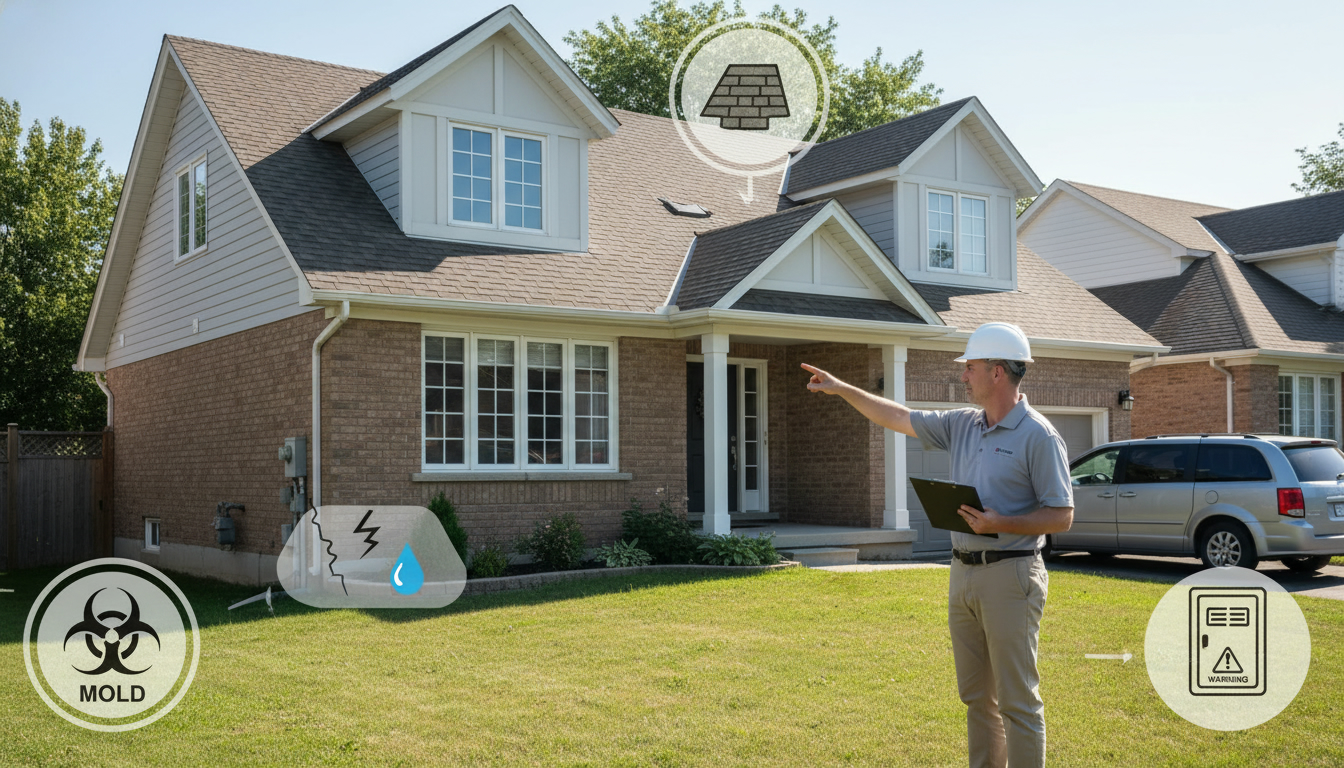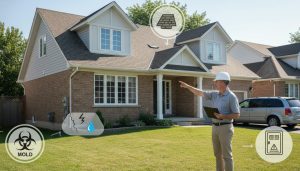What are the most common hidden defects in
Ontario homes?
Are these the most common hidden defects in Ontario homes? 12 costly problems buyers and sellers miss
Buying or selling a home in Ontario? Hidden defects quietly destroy value, cause stress, and create surprise bills. Know the top issues, spot the red flags, and act fast. This is direct, practical advice from an experienced local realtor who handles inspections every week.
Top hidden defects in Ontario homes (and why they matter)
- Foundation cracks and settlement
- Why it matters: Structural issues lead to expensive repairs and affect mortgage approvals.
- Watch for: Stair-step cracks in brick, sloping floors, doors that stick.
- Water intrusion and poor drainage
- Why it matters: Water causes mold, rot, and structural damage.
- Watch for: Musty smell, efflorescence on basement walls, pooling near foundation.
- Basement mold and hidden moisture
- Why it matters: Health risk and devalues the home.
- Action: Ask for moisture readings and mold testing when suspicious.
- Old or unsafe electrical systems
- Why it matters: Fire hazard, insurance and safety concerns.
- Watch for: Knob-and-tube wiring, overloaded panels, fuses instead of breakers.
- Roofing problems and ice dam damage
- Why it matters: Leaks, insulation loss, hidden wood rot.
- Watch for: Missing shingles, dark streaks, attic stains.
- Plumbing leaks and galvanized/old pipes
- Why it matters: Hidden leaks cause mold, stains, and high repair costs.
- Action: Request a full plumbing inspection and check water pressure.
- HVAC failures and inefficient systems
- Why it matters: High operating costs and unexpected replacement bills.
- Watch for: Inconsistent heating, older furnace age, poor maintenance records.
- Asbestos, lead, and hazardous materials in older homes
- Why it matters: Costly remediation and health risks.
- Action: Test before renovating.
- Inadequate insulation and air sealing
- Why it matters: Higher hydro bills and comfort problems.
- Watch for: Cold spots, high energy usage, ice dams.
- Window and door rot, poor flashing
- Why it matters: Water entry, energy loss, and expensive replacements.
- Crawlspace and basement wood rot
- Why it matters: Structural decay spreads fast and is costly to fix.
- Hidden pest damage (termites, carpenter ants)
- Why it matters: Often unseen until structural damage occurs.
Clear, actionable steps buyers and sellers must take
- Hire a licensed Ontario home inspector. Get a full report with photos and recommendations. Include keywords: home inspection Ontario, licensed inspector.
- Ask for infrared/thermal imaging and moisture testing when suspecting leaks. This finds problems invisible to the naked eye.
- Order specialist inspections for sewer scope, electrical, HVAC, and hazardous materials when the inspector flags concerns.
- Get written repair estimates from licensed contractors.
- Use the inspection report to negotiate price, require repairs, or request credits.
Why work with a local expert
Local knowledge matters. A realtor familiar with Toronto and GTA homes knows which builders, streets, and neighborhoods have recurring issues. Use an agent who reads inspection reports fast and coordinates trusted contractors.
Need help scheduling an inspection, reading a report, or negotiating repairs? Contact Tony Sousa — local realtor and inspection-savvy advocate. Email: tony@sousasells.ca | Phone: 416-477-2620 | https://www.sousasells.ca
Don’t assume a home is perfect. Find the hidden defects before they become your problem.





















